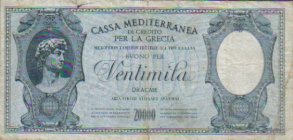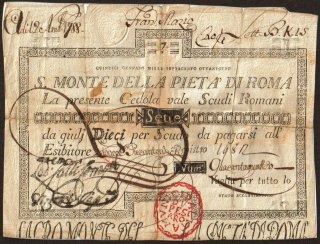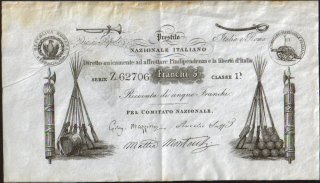Italy's Colonial Empire - A Paper Money Trail

This, the thirty-second in our series of articles on paper money, is the story of how Italy aspired to build a colonial empire of its own - and in large part succeeded.
Being one of the last European countries to unify in 1870, Italy was late in arriving to the "scramble for Africa" wherein other powers, notably Great Britain and France, were expeditiously establishing new colonies on the African continent. Shortly after unification, a wave of nationalism swept across Italy. Italians yearned for the past glory of the Roman Empire which, by 30 BC, had conquered all the lands surrounding the Mediterranean. They felt that much of this old territory was rightfully theirs. When Benito Mussolini came to power in 1922 as Italy's absolute dictator, he played upon this theme. The old Roman notion of Mare Nostrum (Our Sea) almost became a reality. Mussolini was bent upon pushing his 'Greater Italy' all the way across Africa from Tunisia, through Egypt and the Sudan to Italian East Africa on the Indian Ocean before the British stopped him at El Alamein, thus ending Italy's quest for an Italian Empire forever.
Click to download PDF here.
Italian Paper Money Prior to Unification - Part I

Before unification in 1870, Italy was a collection of kingdoms, duchies and republics, which by and large issued their own paper money. In Part I we will review the bank note issues of these places. Commencing with the kingdom of Piedmont and it's first paper money of 1746 we will in turn discuss the note issues of the Republic of Venice, the Papal States, Lombardy-Venetia, and the kingdoms of Naples and Sicily. Napoleon's invasion of Italy in 1796 changed the map of the peninsula forever. In Part II we will explore these changes, commencing with the notes created during the French occupation.
Click to download PDF here.
Italian Paper Money Prior to Unification - Part II

In Part I of this article we examined the bank notes of the various kingdoms, duchies and republics which existed on the Italian peninsula prior to Napoleon's invasion in 1796. Part II examines the political changes brought about by Napoleon's invasion, and the bank note issues created thereby. Subsequent to Napoleon's defeat, we trace the bank notes of the countries re-established by the Treaty of Vienna in 1815. Finally we look at some of the revolutionary movements, which sought independence from the kings, dukes, and grand-dukes who ruled Italy during the revolution of 1848. Lastly we address the ultimate success of the revolutionaries, which brought about independence and the establishment of the Kingdom of Italy.
Click to download PDF here.